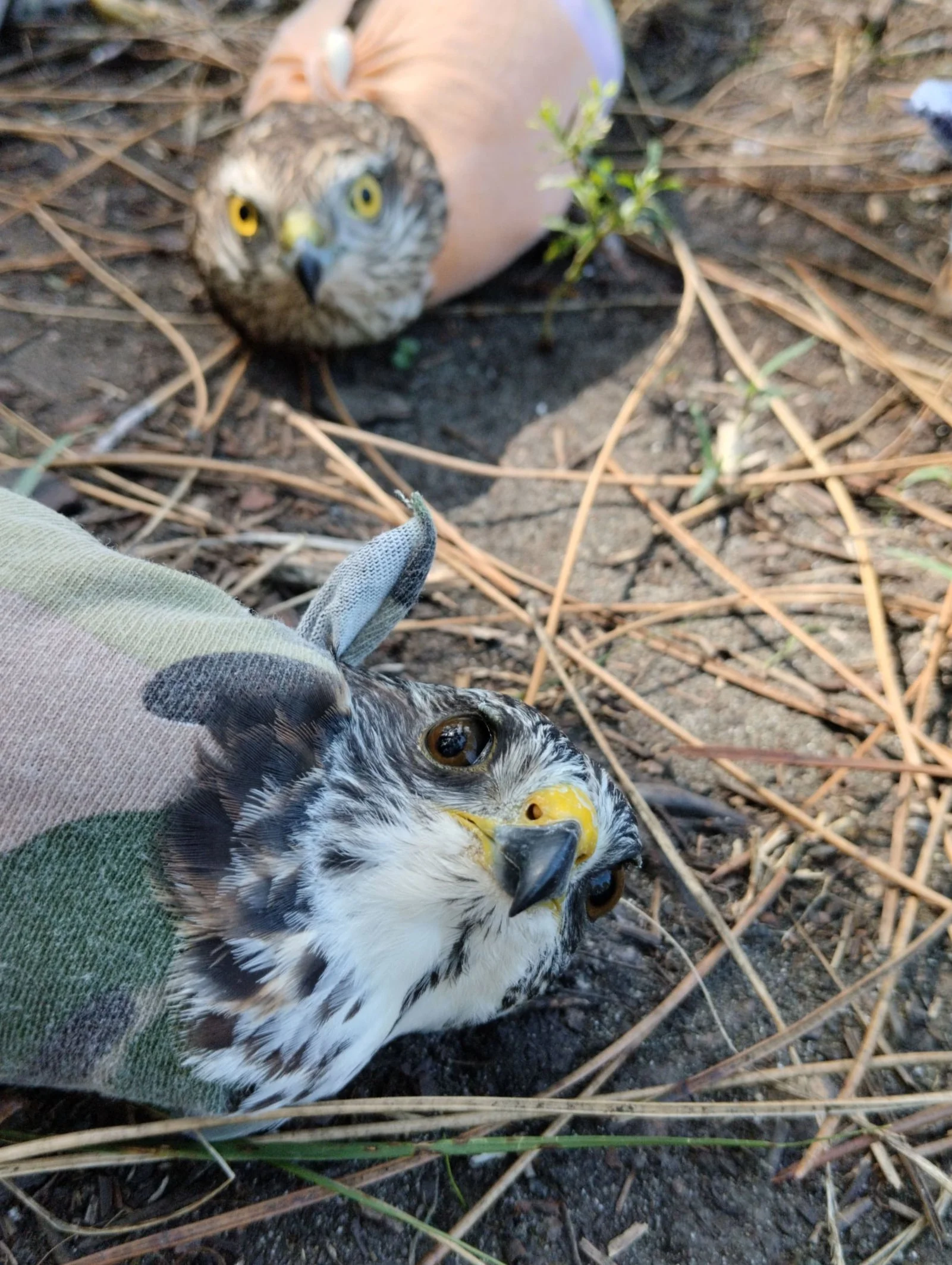Falconry - Third time's the charm
“Somewhere deep in Africa, where the elephants roam, but where there is no roaming”
After returning from Georgia last year, with ‘only’ two Levant Sparrowhawks tagged out of eight anticipated individuals, our moods were down. We wondered if perhaps we had been too optimistic and doubted whether or not to give it another chance in the autumn of 2023. Sure, the weather and migration were unusual in 2022, but just two birds tagged in three weeks (!?) … Our field team of six simply couldn't believe it. To make things worse, one of the tagged Levants stopped sending signal already after two weeks, while still being in Turkey, and after little over a month the second bird seemed to have fallen quiet as well, somewhere in Sudan...
Levant Sparrowhawk Kimara. Photo by Dries Engelen.
Then... nearly two months later, Levant Sparrowhawk Dudu brought hope from the plains of Tanzania! Directly after having received this update, our spirits were lifted and it was decided that we would return to Georgia in 2023.
Preparations went well and before you knew it we were back at our host family in Poti. Our three young falconers had several kochis ready upon our arrival, Hunan Global Messenger Ltd was so kind as to replace our old tags with a new batch, and even the weather was looking promising.
With two Levant Sparrowhaks trapped on the first day, this season started of great! The first one was picked up in the last moment by our sharp falconer, and therefore rightfully earned to have the bird carry his nickname Kimara. The second bird, being a mere 139 grams, was not considered suitable for tagging. As this year we timed our visit a little later there were quite some Eurasian Sparrowhawks mixed up in the migration already. This 'bycatch' provided the falconers a nice opportunity to improve their ringing and measuring skills.
A young falconer extracting a Eurasian Sparrowhawk from the net. Photo by Dries Engelen.
The next day our enthusiasm reached new levels when an adult female was trapped. It was an absolute stunner of a bird, and we decided to name it after the warm and kind hostess of our guesthouse - Julia. We had high hopes this bird was gonna make it far, as well as for the juvenile bird that was tagged two days later. This young bird, named Io, weighed 242 grams and was the fattest individual of all. By now we had tagged more birds in four days, than last year in three weeks! We were optimistic and celebrated with a home-made Adjarian Khachapuri and some ludi.
Adult female Julia. Photo by Dries Engelen.
Home-made Adjarian khachapuri. Photo by Dries Engelen.
However, the following days migration slowed down and with each day passing things were starting to look bleak until, eventually, our last day had arrived. Although we were not very hopeful anymore, a nice breeze was blowing from the plain in the east that morning, pushing the migration of birds to the coast. It turned out to be a crazy day, with Sparowhawks all around. The young falconers managed to trap a total of 29 birds! At this point in the season, of course they were mostly Eurasians, but luckily for all of us there were still 5 Levants among them! Suddenly we had the luxury to decide on which individuals to deploy our three remaining tags. The lightest birds were obviously omitted for this purpose and in the end we tagged another two juveniles - Shotiko and Gia -, and one adult(!) male Tornike.
Juvenile Levant Sparrowhawk Shotiko. Photo by Pelle Mellov
Where are the birds now:
†Kimara (juv) – This bird moved south quickly after trapping, overshot its migration route somewhat in Turkey, but corrected it and seemed to be quickly on its way to Afirca, when, unfortunately, on 5th of October the bird died in southern Israel.
Julia (adF) – as expected, steadily moving southwards and the third bird to have arrived to Tanzania.
†Io (juv) – Unfortunately Io never got far. It stayed around the Kolkheti NP for about 2 weeks, slowly making its way to the mountains, but ultimately never made it out of the park.
†Shotiko (juv) – This individual was the first bird to make it to Tanzania this year. However, shortly after arriving there it died on 3rd of December near the Mbalageti river in the Serengeti NP, probably predated by another raptor.
Tornike (adM) – still going strong, but taking things slow. It was the only bird that did not cross the Red Sea after the Sinai desert, but instead went back up to circumvent it. , Now it is gradually moving southwards along the Nile river.
Gia (juv) – One of the three birds to be in Tanzania right now, almost as far as Dudu got last year. Will it also do a similar loop to what we saw Dudu doing before heading back north...?
The map shows the routes and final locations of all the birds, along with the routes of Dudu and Gizo that were tagged and tracked in 2022, but whose data transmission stopped eventually.
Stay tuned!

